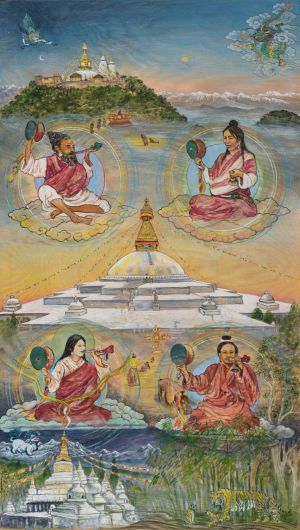Not Enough Merit to Practice Tantra
A student wrote to Rinpoche about difficulties he was having with his practice. Rinpoche gave the following advice.
My very dear Laurie,
Thank you very much for your letter. As for the difficulties you are having, my assumption is you don’t have enough merit to practice highest yoga tantra. These practices are very precious. Sometimes spirits interfere. When you are practicing, they can cause your mind to hallucinate. This can cause your mind to think the wrong way. The basis for this is lack of merit, and on that basis spirits can interfere.
To give you an example, recently in Taiwan a woman went a little crazy, hallucinating, during the very precious teachings of a very great master. Now she is better. So, from time to time, this happens when very precious teachings are going on. It happens to a person who doesn’t have merit, and due to past negative karma. It is possible in a past life that the person had negative thoughts toward that deity, or made some mistakes with the guru. In this way, a person could also become crazy.
First, the person can be positive and generate renunciation, but somehow the spirit causes harm. It causes the mind to be diverted, due to past negative karma. What is needed is to purify these negative karmas and generate faith in tantra. My advice is to try to practice Yamantaka. Think that I (Lama Zopa) am oneness with Yamantaka. Think I (Lama Zopa) am Yamantaka. If this still doesn’t help, write to Geshe-la and ask Geshe-la to allow you to stop your Yamantaka practice temporarily, until your situation gets better.
Remember, after you have taken an initiation, you cannot change or give up your guru unless you ask his or her permission and the guru from his or her side says OK. But you should never criticize your guru. Giving up the guru is the heaviest karma and the heaviest obstacle to realizations and enlightenment.
This is my opinion of what to do. My suggestion for your practice is to look at pictures of Heruka, Vajrayogini, and Guhyasamaja, and see if you feel some connection with one of them.
Since you feel a connection to me, I am happy to help you. Therefore, I am suggesting these practices to you to gain merit and purify. These are things for you to do for the rest of your life to make your life meaningful, especially with lam-rim. Here is what to do, and please let me know if you have any questions.
These practices should be done on the basis of the Guru Yoga of Lama Tsongkhapa or at the time of doing the Six-Session Guru Yoga practice, which I think you need to do every day, having taken the Yamantaka initiation. When you do Six-Session or Lama Tsongkhapa Guru Yoga, at the time you absorb the guru into yourself, you do the lam-rim meditation or the lam-rim prayer. This practice is good first thing in the morning. Prior to this, very first thing in the morning, try to do prostrations to the Thirty-five Buddhas. Then in the evening, do Vajrasattva practice with prostrations, or seated.
What I have said here for the morning and the evening would be the very best basic practice during the day. As for what lam-rim meditation to do at this time, spend four months meditating on the lower scope being, then three months meditating on the middle scope being, five months meditating on bodhicitta, and then four months meditating on emptiness. Meditating on the lam-rim in this way does not mean only meditating on whatever that month’s topic is, but doing a scanning meditation on the entire lam-rim, and then coming back to meditate for four months on the lower scope being.
Long term, you can do the practices that I mentioned to you before. These are the preliminary practices that you should start to do, and gradually try to complete in this life. You can do them in any order, and also you can do more than one at a time if you like.
Dorje Khadro practice: 400,000 mantras
Vajrasattva: 100,000
Tsa-tsas: 70,000
Nyung-näs: 16
Source
[[1]]
